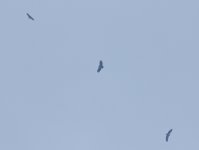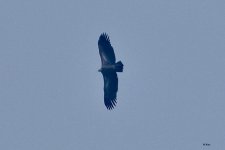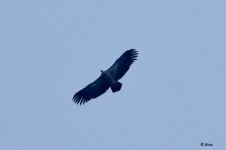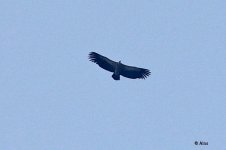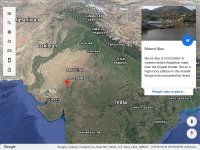Today snapped three bird high up Snaps not too clear as the day was overcast. In the photograph, Left top corner seems it's a Steppe Eagle, on the right above Eurasian Griffon and below Indian vulture?
Location Mount Abu Raj. India.
Taken today, 15 Nov 2020.
I have added a few more individual snaps to hope these help in the identification of these birds.
Appreciate the help offered on this forum
Ains
Location Mount Abu Raj. India.
Taken today, 15 Nov 2020.
I have added a few more individual snaps to hope these help in the identification of these birds.
Appreciate the help offered on this forum
Ains
Attachments
Last edited:




